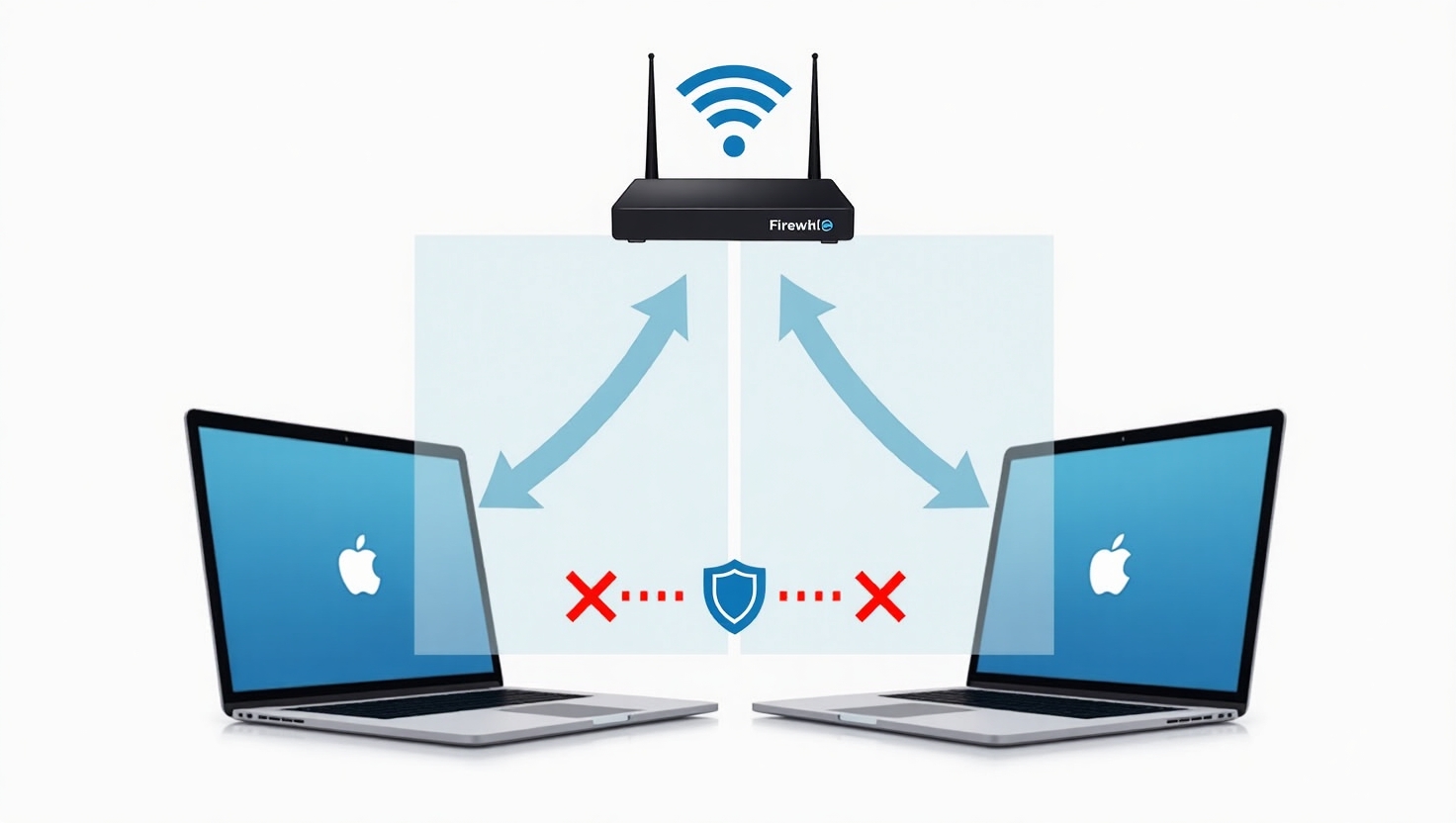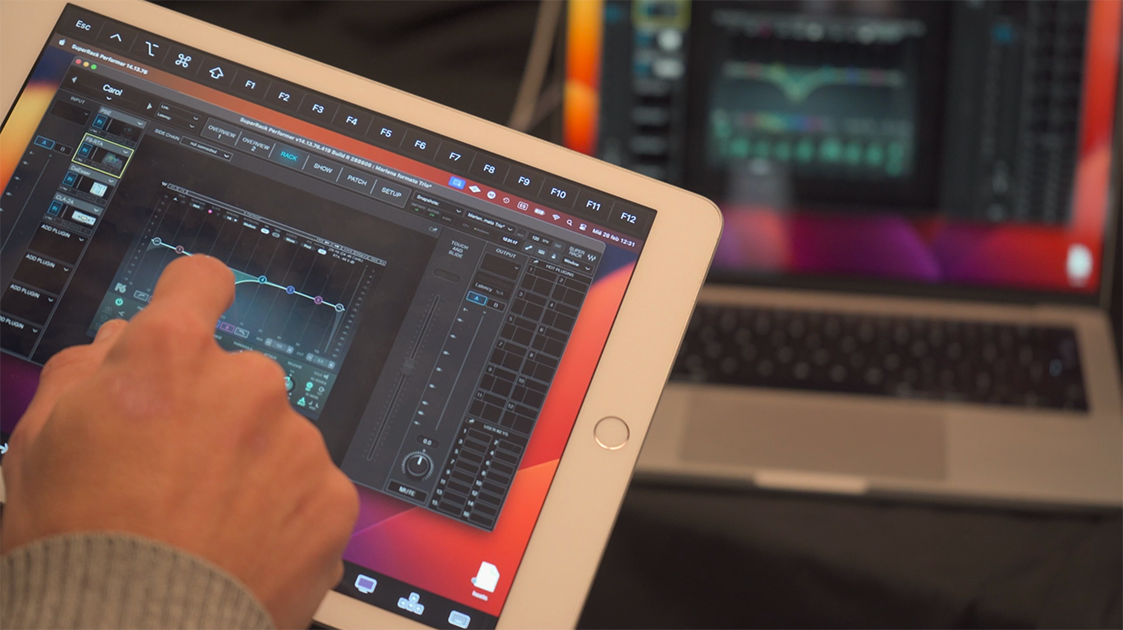🧭 The problem: my iPad won’t connect to my Mac
You’ve installed Total Remote Control on both your iPad and your Mac. They’re connected to the same WiFi network. You can browse the internet on both… but TRC won’t find your Mac — not even with a manual IP address.
Why can’t your iPad connect to your own Mac if they’re clearly on the same network?
This guide explains why this happens, how to detect the issue, and how to fix it. Spoiler: it’s not a bug in the app, but a common router configuration that blocks local device-to-device communication.
🚀 Why Total Remote Control needs an open local network
Total Remote Control is built to give you professional-grade control over your Mac from your iPad. To do this, it relies on three core principles:
- 🔁 Ultra-low latency, essential for critical tasks like live audio, lighting or media triggering
- 📲 Native touch interaction
- 🌐 Fully local operation, with no servers, no cloud, and no internet required
To ensure this level of precision and responsiveness, TRC creates a direct connection between your iPad and your Mac on the same local network.
If your network blocks that communication, TRC simply can’t work.
🔒 Why being on the same WiFi isn’t always enough
Some routers — especially in public places, offices, schools or poorly configured homes — are set up to block traffic between devices on the same WiFi. This is a security feature called:
Client Isolation or AP Isolation
It’s common in:
- Guest networks
- Office / hotel / school WiFi setups
- Routers with multiple SSIDs or VLANs
When this setting is enabled:
- Devices can access the internet
- But cannot see or connect to each other
This breaks apps like TRC — and also AirDrop, AirPlay, printer sharing, and more.
💡 If AirDrop doesn’t work, it’s very likely that your network is blocking local device communication.
🔎 How to check if your network is blocking local connections
1. Are you on a guest network?
On your iPad, go to Settings > Wi-Fi and check the name of the network. If it includes:
Guest,IoT,Visitors, etc.
…it’s probably designed to prevent local access.
➡️ Switch to your router’s main network.
2. Do your devices have IPs on different subnets?
On iPad:
- Settings > Wi-Fi > tap the network → check IP Address
On Mac:
- System Preferences > Network > select your WiFi → note the IP address
They should start with the same numbers, like 192.168.1.X.
If one is 192.168.X.X and the other is 10.0.X.X, they’re likely on separate segments and can’t communicate.
3. Does AirDrop also fail?
If AirDrop doesn’t work between your Mac and iPad, your network is likely blocking local traffic. TRC won’t work either in that scenario.
🛠️ Step-by-step fixes
✅ Use the main network, not the guest one
Ensure both devices are on the same primary WiFi, not a guest or secondary network.
✅ Check that both IPs are in the same range
Both addresses should start identically. If not:
- Turn WiFi off and back on on both devices
- Reboot the router
- Disable cellular data on the iPad
✅ Disable client isolation on the router
How?
-
On your Mac:
System Preferences > Network > Advanced > TCP/IP → copy the Router address
(e.g.192.168.1.1) -
Open a browser and go to:
http://192.168.1.1(or similar) -
Log in with username and password (often
admin / admin) -
In the wireless settings, look for options like:
- “AP Isolation”
- “Client Isolation”
- “Wireless client separation”
- “Block communication between devices”
-
Disable that option and save
✅ Use port 443 if port 4433 is blocked
By default, TRC uses port 4433. Some routers or firewalls may block that.
You can configure TRC to use port 443, which is usually open (used by HTTPS).
⚠️ Note: this won’t bypass client isolation — it only helps if the port itself is blocked.
📡 Need maximum reliability?
For studios, live shows, training setups or any critical environment:
➡️ Set up a dedicated router just for TRC.
Benefits:
- Complete control over network rules
- No external traffic or interference
- No isolation
- Clean, stable, ultra-low-latency connection
It works even without internet, as long as both devices are connected locally.
✅ Final thoughts
Total Remote Control is built for direct, secure, and high-performance communication between your iPad and your Mac — without servers, internet, or external dependencies.
If your iPad can’t connect to your Mac, chances are your network is blocking local device traffic. The good news: this is easy to fix once you know what to look for.
Need help adjusting your network?
📩 Reach out to us: support@total-remote-control.com


